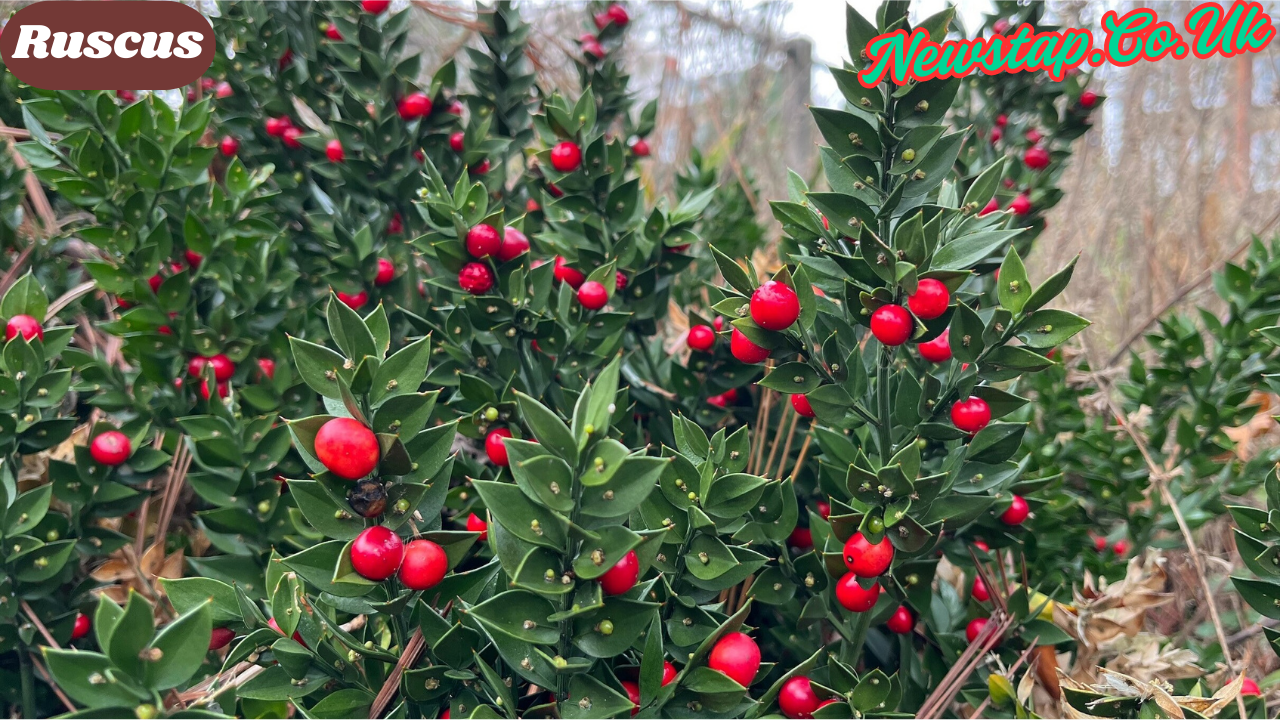Ruscus, a name that often comes up in conversations about elegant greenery, has carved a niche for itself in the world of floristry and horticulture. This evergreen plant, celebrated for its vibrant foliage and practical uses, holds a charm that makes it a favorite in bouquets, arrangements, and gardens alike. Let us dive deeper into the fascinating world of ruscus and uncover its characteristics, uses, and care tips.
What Is Ruscus?
Ruscus is a genus of flowering plants belonging to the Asparagaceae family. Native to Europe, North Africa, and parts of Western Asia, ruscus plants are prized for their striking foliage and resilience. The most commonly known species include Ruscus aculeatus (commonly called butcher’s broom) and Ruscus hypoglossum. These species are known for their glossy, dark green leaves that maintain their beauty throughout the year.
Ruscus plants are rhizomatous, meaning they grow from underground stems, making them hardy and easy to propagate. Their adaptability to various conditions has made them a staple in gardens and floral arrangements worldwide.
The Unique Appearance of Ruscus
One of the standout features of ruscus is its unique structure. What appear to be leaves are actually flattened stems called cladodes, which perform photosynthesis. This gives the plant its characteristic look, with sharp, pointed ends and a waxy texture that adds elegance to any setting. During the flowering season, small, inconspicuous flowers bloom, followed by bright red berries that enhance its visual appeal.
Uses of Ruscus in Floristry
Ruscus has become a favorite among florists due to its versatility and long-lasting freshness. Here are some popular uses:
- Bouquets and Arrangements: Ruscus adds texture and depth to floral bouquets, serving as an excellent filler. Its dark green hue contrasts beautifully with colorful blooms.
- Wedding Decor: The elegant, evergreen nature of ruscus makes it a popular choice for wedding decor, including table centerpieces, garlands, and arches.
- Dried Arrangements: Even after drying, ruscus retains its shape and color, making it ideal for long-lasting arrangements.
- Holiday Decor: With its festive red berries, butcher’s broom variety is often used in Christmas wreaths and decorations.
The Medicinal History of Ruscus
Historically, ruscus has been valued not just for its ornamental qualities but also for its medicinal properties. In traditional medicine, particularly in Europe, Ruscus aculeatus was used to treat a variety of ailments. It was believed to have anti-inflammatory and diuretic properties, making it effective for treating venous insufficiency, varicose veins, and hemorrhoids.
While modern science has yet to fully validate all traditional claims, ruscus extracts are still used in some herbal remedies and skincare products.
Growing and Caring for Ruscus
Ruscus is known for its low-maintenance nature, which makes it an excellent choice for gardeners of all experience levels. Here are some tips to grow and care for ruscus:
- Light Requirements: Ruscus thrives in partial to full shade but can adapt to brighter conditions if not exposed to direct, harsh sunlight.
- Soil Conditions: This plant prefers well-draining soil with a neutral to slightly acidic pH. Adding organic matter can enhance its growth.
- Watering Needs: Ruscus is drought-tolerant once established. Water moderately, allowing the soil to dry out slightly between waterings.
- Pruning: Minimal pruning is required. Remove dead or yellowing stems to maintain its shape and health.
- Pest and Disease Resistance: Ruscus is highly resistant to pests and diseases, making it a trouble-free addition to gardens.
Propagation Methods
Ruscus can be propagated through division or from seeds:
- Division: The most common method, division involves separating the rhizomes and planting them in new locations.
- Seeds: While possible, growing ruscus from seeds is a slower process and requires patience.
Types of Ruscus Plants
While ruscus encompasses several species, the following are among the most popular:
- Ruscus aculeatus (Butcher’s Broom): Known for its medicinal history and bright red berries, this species is both ornamental and practical.
- Ruscus hypoglossum (Spineless Butcher’s Broom): This variety is appreciated for its smoother edges, making it a softer choice for arrangements.
- Israeli Ruscus: A florist’s favorite, this type is characterized by its elongated stems and elegant appearance.
- Italian Ruscus: Similar to Israeli ruscus but with a more delicate and feathery look, perfect for intricate designs.
Cultural and Symbolic Significance
Ruscus has also carried symbolic meaning in various cultures. Its evergreen nature is often associated with endurance and resilience, while its use in wedding arrangements symbolizes long-lasting love and unity. In ancient times, ruscus was believed to ward off evil spirits, leading to its inclusion in protective rituals.
Ruscus in Modern Landscaping
Beyond floristry, ruscus is increasingly being used in landscaping for its low-maintenance and aesthetic appeal. It works well as a ground cover, in shaded corners, or as a backdrop for more vibrant plants. Its adaptability to pots also makes it a popular choice for patios and balconies.
Why Choose Ruscus for Your Space?
Ruscus stands out for its combination of beauty, practicality, and ease of care. Whether you are a florist looking for the perfect greenery, a gardener seeking a resilient plant, or someone who appreciates timeless elegance, ruscus offers something for everyone.
Incorporating ruscus into your space brings an evergreen charm that’s hard to match. Its ability to thrive in various conditions and its versatility in use make it a plant worth cherishing.
Ruscus, with its rich history, striking appearance, and myriad uses, proves that beauty and functionality can go hand in hand. Whether you are admiring its foliage in a floral arrangement or nurturing it in your garden, this plant is sure to leave a lasting impression.
Also Read: Exploring the Mysteries of Pablo’s Galaxy: A Journey into the Unknown



